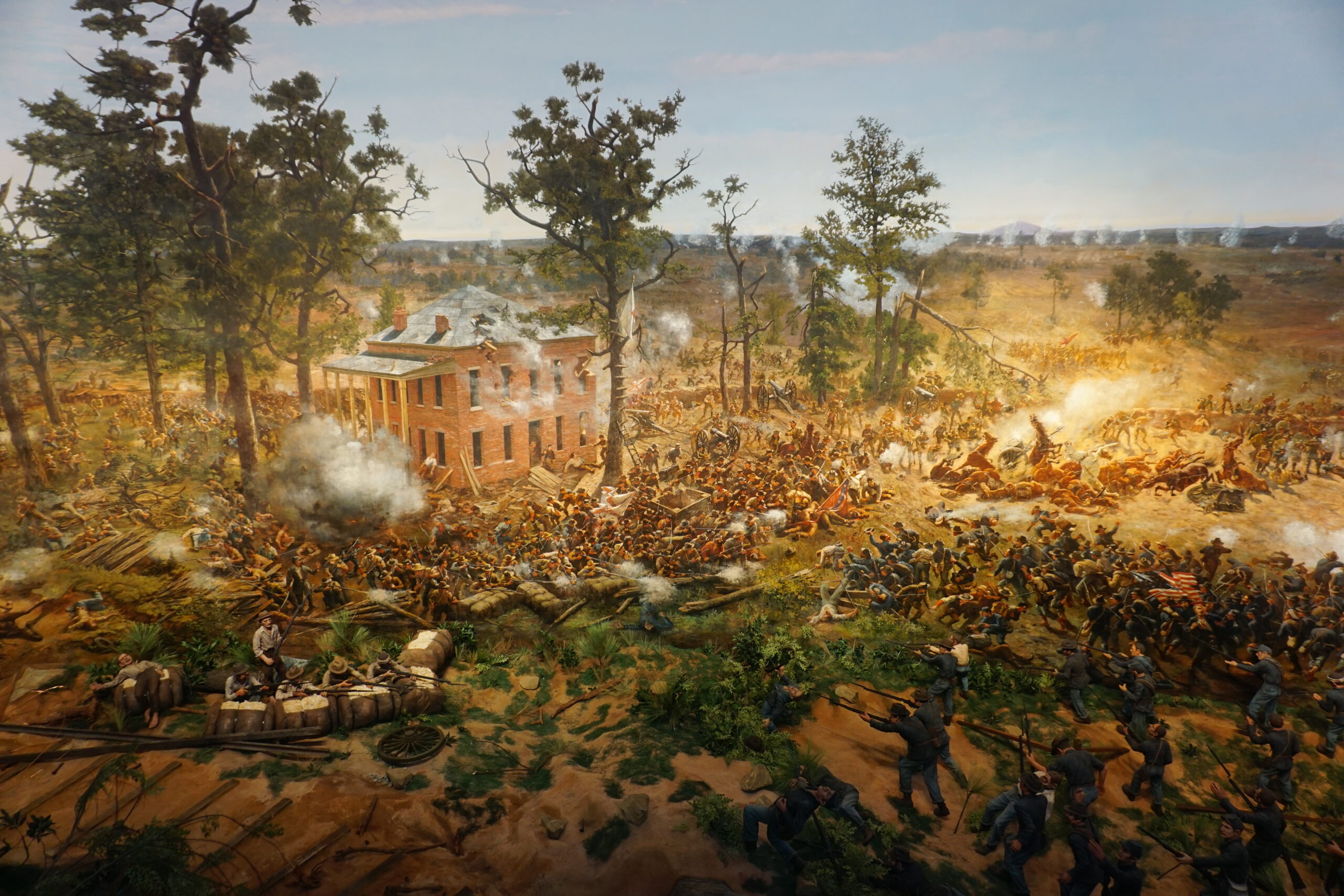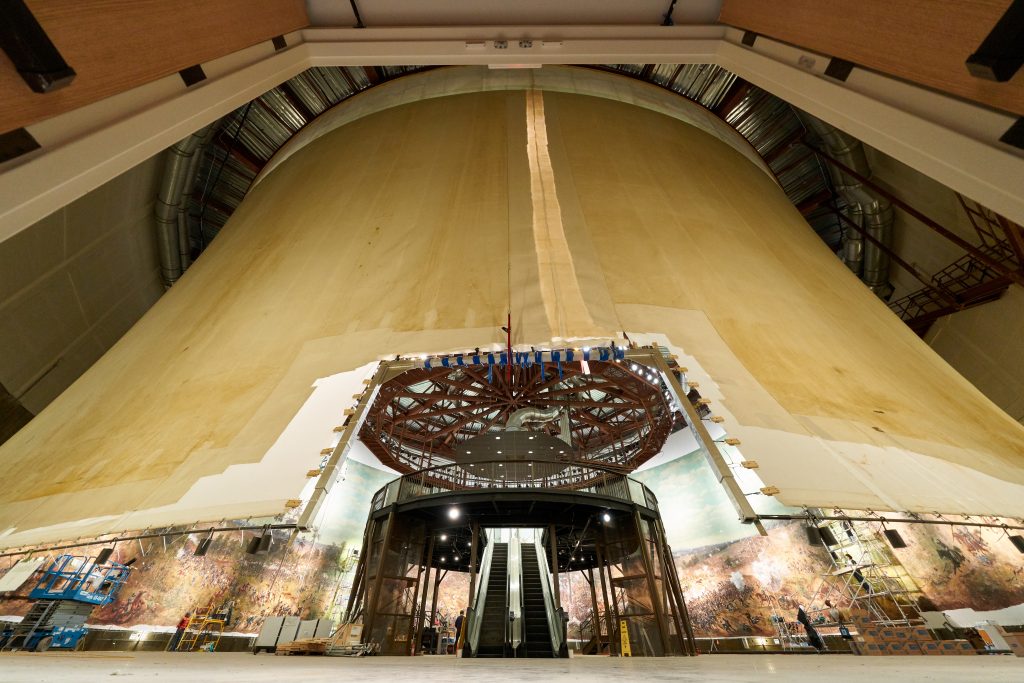Cyclorama Exhibit Seeks To Tell The Painting’s Whole Story (Photos)

The cyclorama is now part of the “Cyclorama: The Big Picture” exhibition at the History Center.
Lauren Booker
The recently opened exhibit at the Atlanta History Center that now displays Atlanta’s cyclorama seeks to tell the whole story of the painting, the center said.
That story includes the different ways the piece has been interpreted by owners in the north and the south over the course of more than 100 years, Gordon Jones, senior military historian at the History Center, said of “Cyclorama: The Big Picture” exhibition.
The restored cyclorama, which was moved from its old spot in Grant Park in February 2017, was unveiled on Feb. 22.
History
It is one of only two cycloramas in the U.S., and was created about 22 years after the Battle of Atlanta, which it depicts, occurred in 1864.
When the artwork was relocated to Atlanta in 1892, Confederate sympathizers focused on the valor and bravery displayed by their side, said Jones. It was advertised in Atlanta as “the only Confederate victory ever painted.”
“It’s one of the greatest pieces of spin that’s ever been put on an artifact,” Jones said.
Though the painting depicts a northern victory, southerners saw in the painting an Atlanta rising like the mythical phoenix — the symbol still used on police cars and city buildings today.
“History is messy, but it has a lot to teach us—if we let it,” said Sheffield Hale, president and chief executive officer of the Atlanta History Center, said in a press release. “What makes Cyclorama: The Big Picture cool is the surprise factor of the painting’s history— the ‘how and why’ it was created, and its various interpretations over time. We are challenging visitors to explore their own perceptions and misperceptions of history. Facts are facts, but the way we view the past varies widely.”
Restoration
The move and restoration was a big undertaking. A section within the center was built to house the 49-foot tall, 10,000-pound painting, which was dropped through the facility’s ceiling and hoisted into its current holding place, according to Jones.
In the center upstairs, visitors can get a 360-degree view of the full-color painting as the 17 German artists intended for it to be viewed. Back when the artwork was finished in 1886, cycloramas were the virtual reality experience of its time.

“They [the artists] intended for it to be this all-immersive experience where you couldn’t see where it ended. You couldn’t see where the top was, because you got this canopy,” Jones said.
How the mirage works is revealed on the first floor of the exhibit. If visitors look up, they can see where the painting stops and how the grass of the 120-foot custom diorama isn’t real.
“When you go underneath the platform, now you see how the illusion works. You look up. You can see the ceiling,” he said. “It’s a prop. It’s historical fiction. It was not the actual battle.”
Some notable elements inside of the cyclorama include a figure of a Union soldier lying on the ground in the diorama that has the face of Clark Gable from “Gone With the Wind.”
There are also more than 6,000 figures in the painting, and one of them is African American, according to the Atlanta History Center. The lone eagle that flies over the battle was painted in the sky is a tribute to Wisconsin veterans.
The Associated Press contributed to this report.








